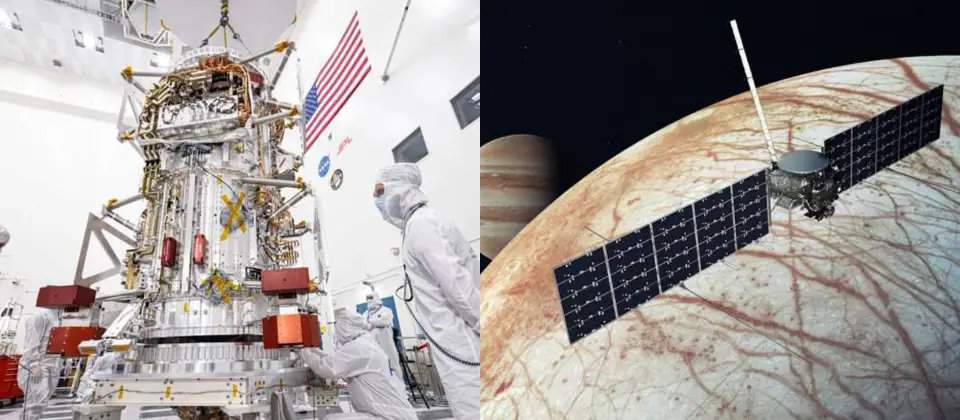While the first human ancestors could not travel out of Earth and explore the Stars, Virgin Galactic just took two fossilized bones of ancient humans into space for the first time. The commercial space agency flew fossils of human ancestors aboard Virgin Galactic’s third commercial spaceflight on September 8. Why did Virgin Galactic take the first human fossils to space? Continue reading to find out.
Why Virgin Galactic Launched 2-Million-year-old Fossils of Human Ancestors to Space
Since humans began to explore this planet, no one has ever attempted to reach space until the 20th century. As our first human ancestors to reach the cosmos, space agencies are seeing the need to take fossils of human ancestors to space. Virgin Galactic decided to take a two-million-year-old collarbone and a 250,000-year-old thumb bone to space.
The company stored the fossilized bones in a protected container and kept it in the pockets of Timothy Nash, who is one of the three paying customers launched aboard Virgin Galactic’s V.S.S Unity spaceplane to orbital space about 55 miles (88.5 km) above our planet’s surface.
“The magnitude of being among the first civilians going into space, and carrying these precious fossils, has taken a while to sink in, during all of the preparations for the flight,” Nash said in a statement, “But I am humbled and honored to represent South Africa and all of humankind, as I carry these precious representations of our collective ancestors, on this first journey of our ancient relatives into space.”
What You Should Know About the Fossils
The two fossilized human ancestors recently launched into space were not discovered at the same time. One of the fossils is a collarbone that belongs to the skeleton of an ancient 4-foot-2 boy, discovered in a region named the Cradle of Humankind near Johannesburg in 2008.
This fossil was discovered by Matthew Berger when he was only nine years old. Scientists revealed that the fossil is associated with a hominin species identified as Australopithecus sediba. Researchers discovered that members of Australopithecus Sediba walked on two feet and possessed apelike behavior such as climbing trees about two million years ago.
“While the journey is symbolically important itself, the fossil is also famous for showing how children and youth can contribute to science through exploration and discovery,” said Zeblon Vilakazi, the vice chancellor at the University of Witwatersrand in Johannesburg in South Africa, where the fossils are organized.
The second fossil which was a 250,000-year-old thumb bone belonged to the Homo-naledi species. It was discovered in late 2013. In early 2014, it was identified as part of the largest excavation ever made until this day that has unearthed about 1,550 specimens at a particular location in Africa.
Scientists revealed that members of this species possess apelike shoulders. However, their arms, teeth, feet, and brains look like humans. Their species made different tools and carved symbols in caves where they reside. These symbols and tools showed that art and religion were the initial part of pre-human history, scientist reveals.
What Scientists Think About This Recent Ascent of Ancient Fossils of human ancestors into Space
Scientists across the world are excited with the recent ascent of ancient human fossils into space.
“Bringing these fossils into space was a way for humanity to show its appreciation for all the of the ancestors and ancient relatives that came before us, Lee Berger, a paleoanthropologist at the University of Witwatersrand in Johannesburg in South Africa who was directly involved in discovering both fossils”, said in the same statement. “Without their invention of technologies such as fire and tools, and their contribution to the evolution of the contemporary human mind, such extraordinary endeavors as spaceflight would not have happened.”
As space agencies are looking forward to advancing human spaceflights, scientists expect more agencies to reach new space worlds with ancient human fossils.
“These fossils represent individuals who lived and died hundreds of thousands of years ago, yet were individuals who likely gazed up at the stars in wonder, much as we do,” Matthew Berger, who carried the fossils from their home in South Africa and handed them to passenger Nash in a brief ceremony before launch, said in the same statement. “I imagine they never could have dreamed while alive of taking such an incredible journey as ambassadors of all of humankind’s ancestors.”
Conclusion
Virgin Galactic recently launched ancient human fossils into space. This is one of the many ways the company is bringing humanity closer and uniting both ancient and modern civilizations. In addition, the company is planning for its Delta class which is scheduled to commence in 2026. It has the capability of flying one mission per week and advancing human tourist space flight. We should be expecting more space agencies to advance the way we explore space in the future with the knowledge of both ancient and modern civilizations. What do you think about this fascinating discovery?




